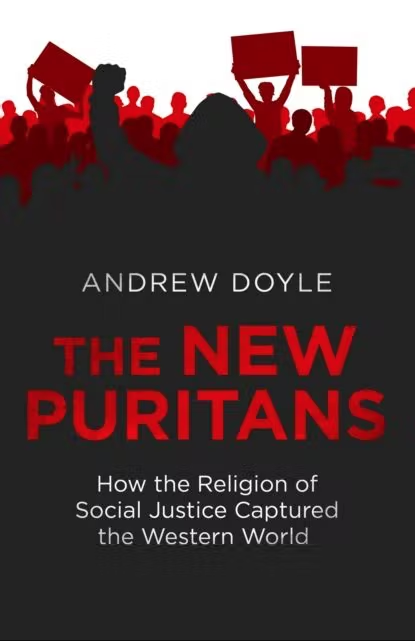I missed this review when it first got posted at The Critic, which is why I’m only linking to it now. Stephen Daisley reviews The New Puritans: how the Religion of Social Justice Captured the Western World:
Andrew Doyle is a dangerous man, and this is a dangerous book. Don’t take my word for it: the bloke’s own mates think he’s one for the watching. Like the pal he tells us about who pegged him as “a fucking Nazi cunt”. Admittedly, vodka martinis had been taken and the friend’s evidence of fascist proclivities was Doyle’s vote to leave the EU and his satires of progressivism, but you can never be too careful.
So it was with some trepidation that I opened my copy of The New Puritans during a recent stay in hospital. I had lost patience with a John Grisham grabbed from the shop, which was largely concerned with how racist and stupid everyone is south of the Mason-Dixon Line. When did the gutsy master of Southern populist pulp turn into a sneering liberal bigot? A shift to the right was in order, so Doyle’s book it was.
As Nazi polemics go, The New Puritans is something of a disappointment. It’s a better read than Mein Kampf and less esoteric than The Myth of the Twentieth Century, but it’s pretty light on the old blood and soil. It turns out Doyle isn’t a Nazi at all, just a bog-standard, run-of-the-John-Stuart-Mill liberal. The New Puritans, far from a tract on Aryan racial purity, is an admonition against authoritarian trends in identity politics. Boy, are there going to be some red faces at the next Britain First reading group.
A broadcaster and stand-up comedian, Doyle is also a recovering academic with a PhD in “Renaissance discourses of gender and sexuality”, which takes some recovering from. It has, however, gifted him an intimate insight into a political insurgency that, in just a few years, has seized the commanding heights of government, law, medicine, education, journalism, the arts and private enterprise.
The architects of this movement are “the new puritans” and their religion is critical social justice, Doyle’s term for what is more commonly known as wokeism. They are “a prohibitionist and precisionist tendency who seek to refashion society in accordance with their own ideological fervour”. Their zealotry, philistinism and spiteful exercise of power over others reminds Doyle of the Salem Witch Trials and the vicious little girls whose “lived experience” sent 19 innocent women to the gallows.
Where Abigail Williams and her finger-pointing acolytes saw witches, their ideological descendants see racists and transphobes. They do so by applying a doctrine called intersectionality, which asserts interlocking systems of oppression as the basis of Western societies. They harness the power of social opprobrium to punish transgressors and sceptics. This is cancel culture — “retributive and performative mass denunciation in order to destroy lives and enforce conformity” — and today it rages on Twitter rather than a colonial settlement in Massachusetts.
In addition to punishment, the new puritans exercise prior restraint by banishing speech they disapprove of as harmful, a practice known as safetyism. Doyle notes how routinely this involves the privileged imposing their preferences on the lower orders. “Imagine,” he ventures, “Debrett’s guide to etiquette having been rewritten by someone with a histrionic personality disorder.”






